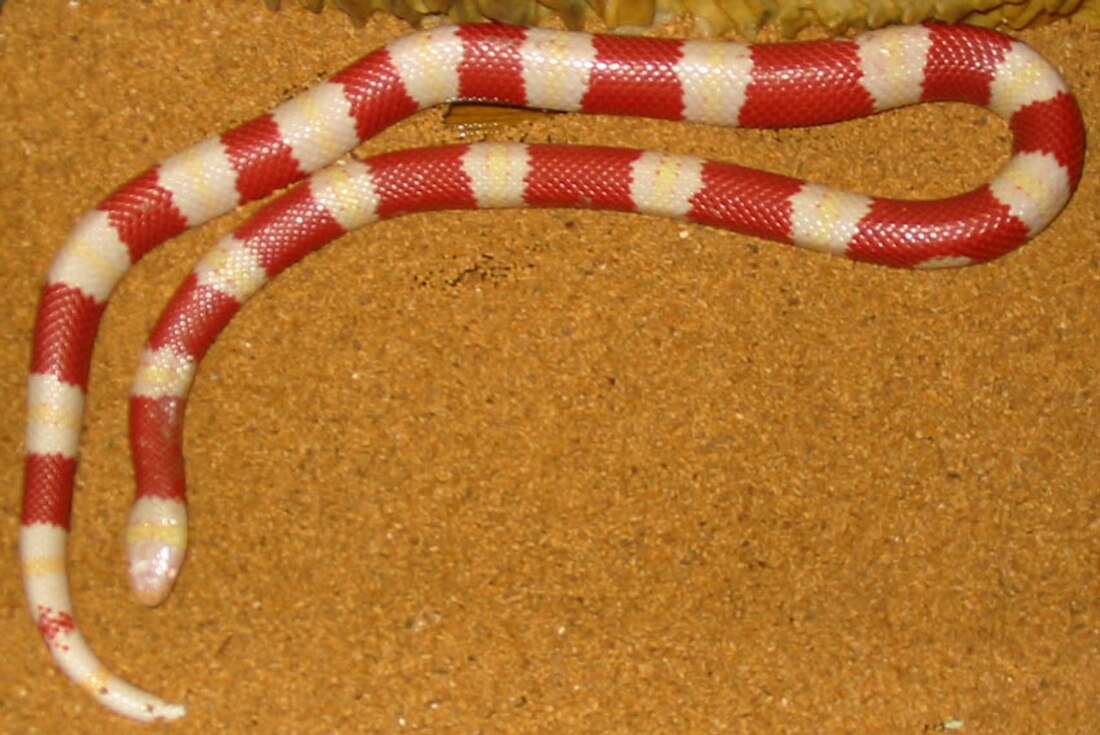Nelson's milksnake
Subspecies of snake From Wikipedia, the free encyclopedia
Nelson's milksnake (Lampropeltis triangulum nelsoni) is a subspecies of king snake that is found in Mexico from southern Guanajuato[2] and central Jalisco[2] to the Pacific Coast.[1] It is also found on the narrow plains of northwestern Michoacán[2] and on the Tres Marias Islands.[1][2] The range of this snake appears to be tied to the proximity of watercourses, including ones utilized for irrigation and agriculture.[1] It is a subspecies of the milksnake, Lampropeltis triangulum. It is similar in size to other king snakes, averaging 42 inches (110 cm) long, and like them, it is nonvenomous.
| Nelson's milksnake | |
|---|---|
 | |
| Albino Nelson's milksnake, Lampropeltis triangulum nelsoni | |
| Scientific classification | |
| Domain: | Eukaryota |
| Kingdom: | Animalia |
| Phylum: | Chordata |
| Class: | Reptilia |
| Order: | Squamata |
| Suborder: | Serpentes |
| Family: | Colubridae |
| Genus: | Lampropeltis |
| Species: | |
| Subspecies: | L. t. nelsoni |
| Trinomial name | |
| Lampropeltis triangulum nelsoni | |
This species is named in honor of Edward W. Nelson who worked for the U.S. Biological Survey from 1890, becoming chief in 1916.[3][4]
Characteristics
Size: Adults average 42 inches (110 cm) long.[1]
Habitat: Semi-arid coastal thorn scrub and interior tropical deciduous forests.[1]
Prey: Nelsons are opportunistic feeders. They will eat birds, small rodents, lizards, amphibians, and other snakes, including venomous species. It has a natural tolerance to the venoms of many native snakes.[5]
Appearance


The snake has 13 to 18 red rings and commonly has a dark-flecked light snout (in rare cases, the snout is mostly black).[1] While the red bands are quite wide, the black ones are noticeably thinner, and the white is very thin.[1] There is practically no black tipping on both the white and the red scales.[1] Albinism and pattern aberrancies are established.[1] It has 19 to 23 rows of smooth scales and a single anal plate.[5]
Until noted by Williams in 1978, it was not recognized that the L. t. sinaloae, or Sinaloan milksnake, found near Mazatlán, Sinaloa, Mexico, is a subspecies of milksnake distinct from the less common L. t. nelsoni.[6]
References
Wikiwand - on
Seamless Wikipedia browsing. On steroids.
